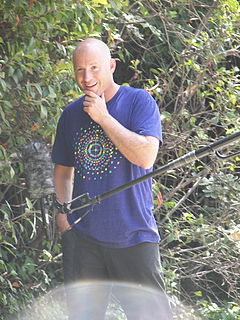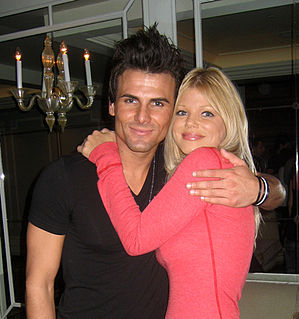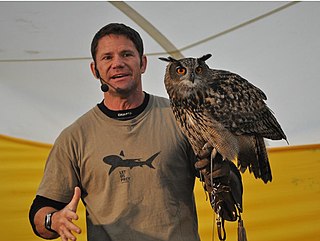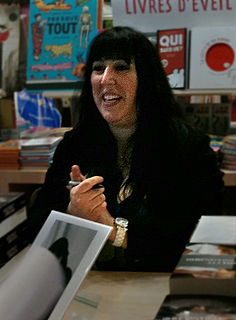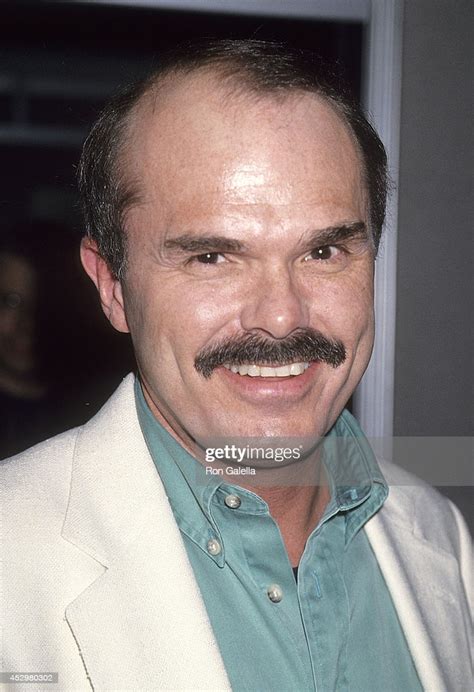Top 170 Coral Reefs Quotes & Sayings
Explore popular Coral Reefs quotes.
Last updated on April 14, 2025.
Ten percent of the big fish still remain. There are still some blue whales. There are still some krill in Antarctica. There are a few oysters in Chesapeake Bay. Half the coral reefs are still in pretty good shape, a jeweled belt around the middle of the planet. There's still time, but not a lot, to turn things around.
Are coral reefs growing from the depths of the oceans? ... [The] reply is a simple negative; and a single fact establishes its truth. The reef-forming coral zoophytes, as has been shown, cannot grow at greater depths than 100 or 120 feet; and therefore in seas deeper than this, the formation or growth of reefs over the bottom is impossible.
The more we heat up the planet, the more it costs all of us, not just in money, but in colossal famines, displacements, deaths, and species extinctions, as well as in the loss of some of the things that make this planet a blue-green jewel, including its specialized habitats from the melting Arctic to bleaching coral reefs.
Many exhibits from this aquarium use Hawaii's abundant natural daylight. This allows Waikiki to display only live coral, which creates beautiful exhibits. It's also a world leader in the propagation of live coral. The aquarium features some unusual and rarely seen species, including the chambered nautilus and the endangered Hawaiian monk seal.
For nine miles along a submerged ridge, the corals rise in lumpy hillocks that spread out 100 yards or more, resembling heaped scoops of rainbow sherbet and Neapolitan ice cream. The mounds, some 100 feet tall, sprout delicate treelike gorgonians that sift currents for a plankton meal. Fish, worms and other creatures dart or crawl in every crevice. This description could apply to thousands of coral reefs in shallow, sun-streaked tropical waters from Australia to the Bahamas. But this is the Sula Ridge, 1,000 feet down in frigid darkness on the continental shelf 100 miles off Norway's coast.
A smile flickered across Coral’s face. “Have you ever noticed that once you have had a taste of certain sweets—raspberry trifle is my own despair—it is quite impossible not to think, not to want, not to crave until you have taken another bite?” “Lord Swartingham is not a raspberry trifle.” “No, more of a dark chocolate mousse, I should think,” Coral murmured. “And,” Anna continued as if she hadn’t heard the interruption, “I don’t need another bite, uh,night of him.
A scientist with a poet's command of language, Cristina Eisenberg writes with precision and passion . . . takes her reader on a breathtaking, sometimes heartbreaking tour of the planet from the Gulf of Maine to the Amazonian rain forests, the tropical coral reefs to old growth forests of the Northwest as well as rivers, lakes, and wetlands. I found the wealth of information not only accessible but riveting . . . Eisenberg's powerful, beautifully written book . . . has the potential to open many people's eyes, minds, and hearts.
The apparent physical stability of reefs belies an underlying natural turmoil of growth, death and destruction of calcareous organisms. Much like a modern city, reefs are constantly being rebuilt and torn down at the same time. Corals are the bricks, broken pieces of plant and animal skeletons the sand, and algal crusts and chemical cements the mortar. Reef growth is determined by the production, accumulation, and cementation of all this calcareous stuff into solid limestone.
It turns out that hyperbolic structures are very common in nature, and the place where lots of people encounter them is coral reefs. Sea slugs, and a lot of other organisms with frilly forms, are biological manifestations of hyperbolic geometry, which is also found in the structure of lettuce leaves and kales, and some species of cactus.
Working in the Arctic is definitely colder, but not necessarily harder. There were different challenges. And in many ways, Chasing Coral was even more of a struggle for me personally. And more of a struggle to capture. Glaciers right now are changing very consistently. The interesting thing that we realized with Chasing Coral was that the corals reefs. They can go from living to dead in two months. And if you're not there at the right time to capture that before and after, you just show up and it's a dead reef. So it was a challenge to be at the right place at the right time.
I wish I could tell you about the South Pacific. The way it actually was. The endless ocean. The infinite specks of coral we called islands. Coconut palms nodding gracefully toward the ocean. Reefs upon which waves broke into spray, and inner lagoons, lovely beyond description. I wish I could tell you about the sweating jungle, the full moon rising behind the volcanoes, and the waiting. The waiting. The timeless, repetitive waiting.
Coral reefs are under assault. They are rapidly being degraded by human activities. They are over-fished, bombed and poisoned. They are smothered by sediment, and choked by algae growing on nutrient-rich sewage and fertilizer run-off. They are damaged by irresponsible tourism and are being severely stressed by the warming of the world's oceans. Each of these pressures is bad enough in itself, but together, the cocktail is proving lethal.
In the course of time I have learned to tramp about coral reefs, twenty to thirty feet under water, so unconcernedly that I can pay attention to particular definite things. But after all my silly fears have been allayed, even now, with eyes overflowing with surfeit of color, I am still almost inarticulate. We need a whole new vocabulary, new adjectives, adequately to describe the designs and colors of under sea.
The theory which I would offer, is simply, that as the land with the attached reefs subsides very gradually from the action of subterranean causes, the coral-building polypi soon raise again their solid masses to the level of the water: but not so with the land; each inch lost is irreclaimably gone; as the whole gradually sinks, the water gains foot by foot on the shore, till the last and highest peak is finally submerged.
Coral reefs, the rain forest of the ocean, are home for one-third of the species of the sea. Coral reefs are under stress for several reasons, including warming of the ocean, but especially because of ocean acidification, a direct effect of added carbon dioxide. Ocean life dependent on carbonate shells and skeletons is threatened by dissolution as the ocean becomes more acid.
We've lost half the summer sea ice in the Arctic. We've wiped out an enormous percentage of the world's coral reefs. We see huge changes in the planet's hydrology already, the cycles of drought and flood both amped up because warm air holds more water vapor than cold. These things are happening with a one-degree increase and going to two degrees won't be twice as bad, the increase in damage won't be linear, it most certainly will be exponential. So it was precisely the wrong moment to elect Trump.
By 2050, at bio-extinction's current rate, between 25 per cent and 50 per cent of all species will have disappeared or be too few in numbers to survive. There'll be a few over-visited parks, the coral reefs will be beaten up, grasslands overgrazed. Vast areas of the tropics that have lost their forests will have the same damn weeds, bushes and scrawny eucalyptus trees so that you don't know if you're in Africa or the Americas.
There's a huge challenge around coral bleaching specifically, because when most people think about coral, they think about the beautiful, white sculpture sitting on their mantle. And it looks so pristine and clean and beautiful. It's not supposed to look like that when it's in the ocean. It has color, it has animal flesh living on it, it has plants living inside of that. They look very, very different when they're healthy in the ocean than they do when they're sitting in somebody's home.










